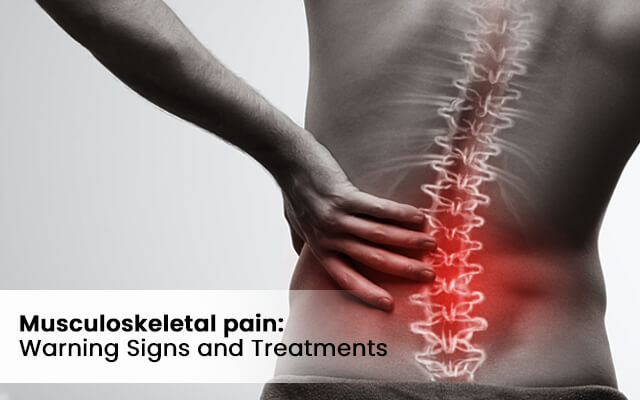Musculoskeletal pain affects the muscles, bones, joints, ligaments, and tendons. It is a common problem that can affect people of all ages. The pain can either be acute, sudden, severe, or chronic. Moreover, an orthopedician in south Kolkata even said that the pain can be localised or it might affect your entire body.
In this blog, we will know about the warning signs of musculoskeletal pain and also explore the different treatment options.
Early symptoms to watch for:
The warning symptoms of musculoskeletal pain can vary based on your situation and the underlying cause. Here are some signs indicating you must consult orthopedic doctors in south Kolkata.
- Pain and discomfort: Persistent dull, sharp or throbbing pain in the muscles, joints and bones is a primary symptom of musculoskeletal issues. This pain can either be mild or even severe.
- Stiffness: If you experience stiffness in your joints or muscles, especially after periods of inactivity or upon waking up, it could be an early sign of musculoskeletal problems.
- Fatigue: Unexplained fatigue or a feeling of tiredness in the muscles, even without physical exertion, can be an early indicator of certain musculoskeletal disorders.
- Muscle weakness: Extreme weakness in the muscles can be an early symptom of musculoskeletal pain which might affect your daily activities.
- Numbness and tingling: Sensations of numbness, tingling, or “pins and needles” in the extremities may be linked to nerve compression or other musculoskeletal problems.
- Difficulty in moving: Difficulty moving a joint or limb through its full range of motion can indicate issues with muscles, tendons, ligaments, or joints.
If you experience any of these symptoms for a persistent period of time, it is always advisable to talk with an orthopedic doctor in south Kolkata for proper diagnosis and treatment.
How is musculoskeletal pain treated?
The treatment option for musculoskeletal pain depends upon its severity and cause. Here are some of the treatment approaches:
- Acupuncture: This method involves inserting thin needles into specific points on the body to alleviate pain and promote healing.
- Medications: Over-the-counter pain medicines can help manage pain and reduce inflammation. Prescription medications might be recommended for more severe pain.
- Injections: Certain pain relieving injections can be administered directly into the affected joint or muscle to provide targeted relief from inflammation and pain.
- Massage therapy: Therapeutic massage can help relax muscles, improve blood circulation and reduce tension and discomfort.
Conclusion:
It’s important to consult with an orthopedician in South Kolkata to determine the most suitable treatment plan for your specific situation.

